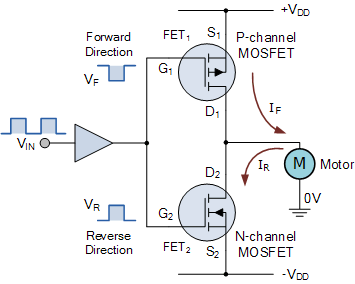I am trying to steer a 12v motor from my microcontroller's 5V pins (CHIP). I have successfully wired it up to support on and off which included an N-MOSFET, 100kResistor and a diode.
Now I want to be able to switch the motor direction also. I found this article: http://www.electronics-tutorials.ws/transistor/tran_7.html which claims that its possible with a N&P MOSFET.
It includes this picture: 
I have wired it up like this on my breadboard (the orange cables connecting to the gates i would manually move for now, later connected to two independent pins of a microcontroller):
 But it doesn't work, moreover the N-Channel MOSFET gets really hot.
1) What's wrong in this setup?
2) Do I need to include any resistors or diodes, like i did in my simple example?
3) Am I correctly hooking up the 0V of the motor to the Ground of the 5v microcontroller (white cable)?
But it doesn't work, moreover the N-Channel MOSFET gets really hot.
1) What's wrong in this setup?
2) Do I need to include any resistors or diodes, like i did in my simple example?
3) Am I correctly hooking up the 0V of the motor to the Ground of the 5v microcontroller (white cable)?
I'm still pretty new to electronics, so hopefully someone can help me out ;)

